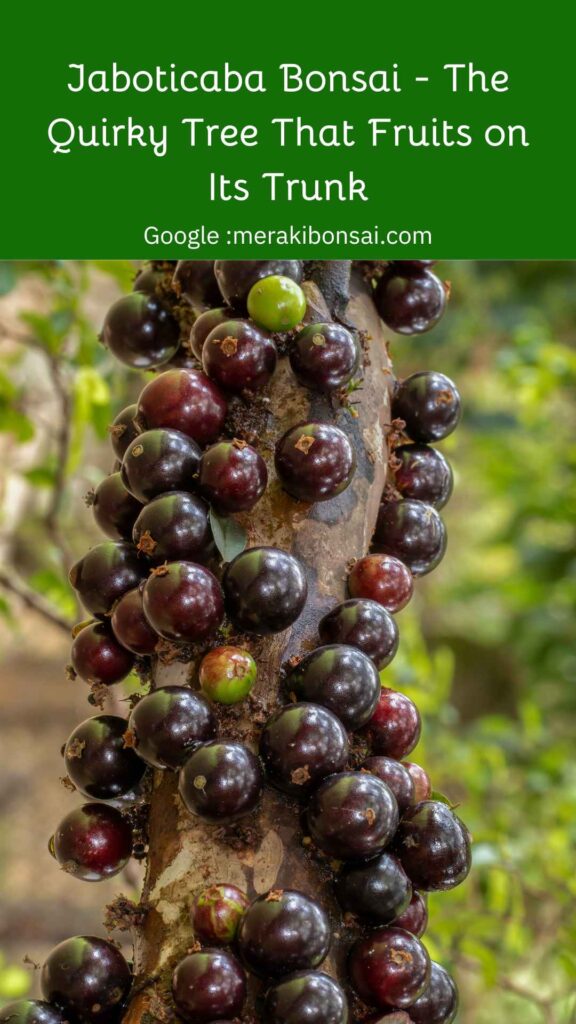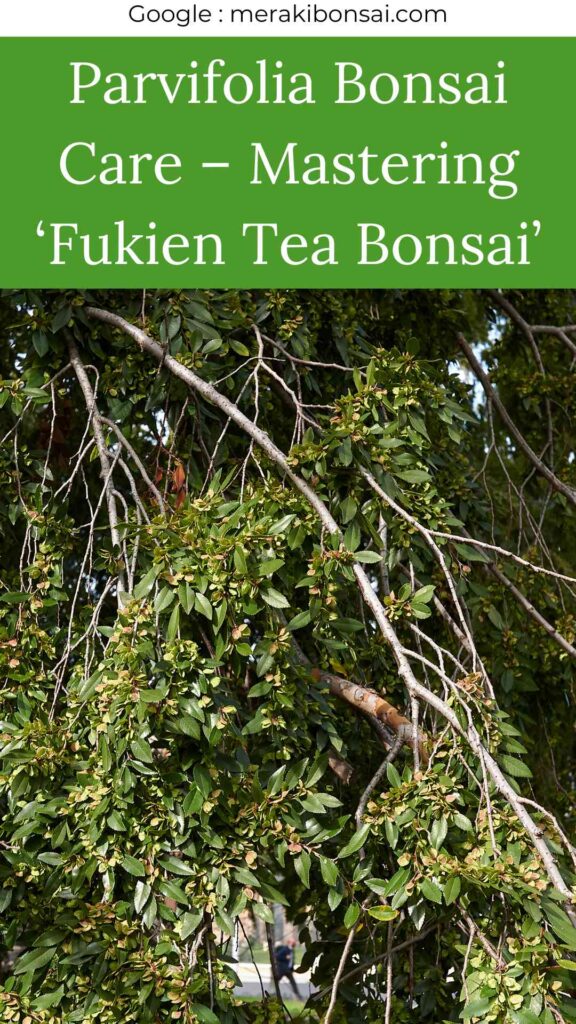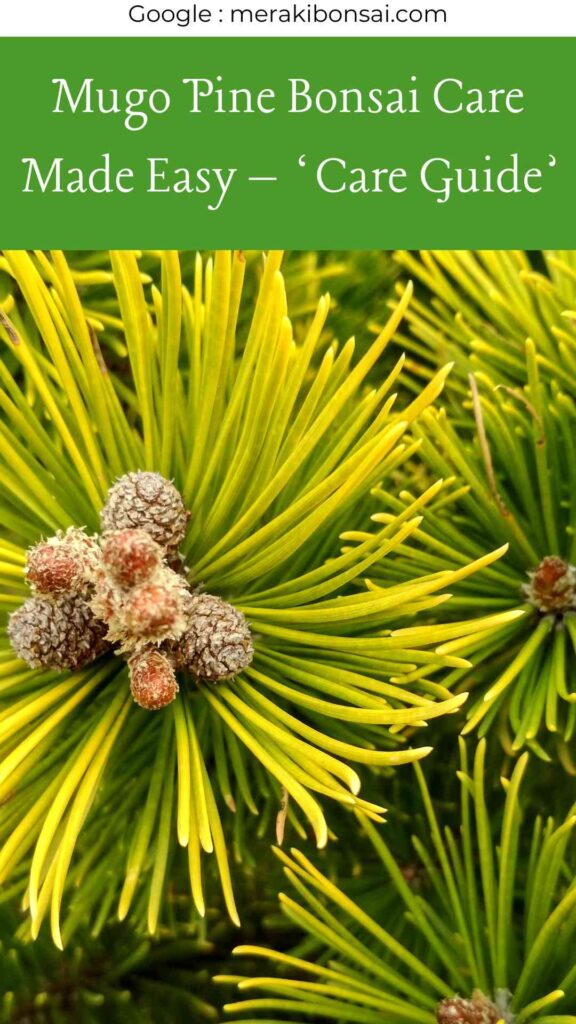
Hey there, bonsai buddies! It’s Raima here, your friendly neighborhood bonsai enthusiast. After tending to these mini trees for over a decade, I’m excited to introduce you to one of the quirkiest bonsai trees out there: the Jaboticaba!
If you’ve never heard of Jaboticaba before, don’t worry. This Brazilian native is a bit of a hidden gem in the bonsai world. What makes it so special, you ask? Well, imagine a tree that grows its fruit right on its trunk and branches! Yep, you read that right. The Jaboticaba tree is like nature’s own candy dispenser.
Now, let’s dive into the wonderful world of Jaboticaba bonsai and learn how to care for these unique little trees. Whether you’re a bonsai newbie or a seasoned pro looking to add some flair to your collection, this guide is for you!
What is a Jaboticaba Bonsai?
First things first, let’s get to know our star. The Jaboticaba (Plinia cauliflora) is a tree native to Brazil, particularly the states of Minas Gerais and São Paulo. In its natural habitat, it can grow up to 45 feet tall! But don’t worry, as a bonsai, it’ll stay nice and compact.
The most fascinating thing about the Jaboticaba is how it fruits. Unlike most trees that grow fruits at the tips of their branches, Jaboticaba fruits sprout directly from the trunk and main branches. It’s a phenomenon called cauliflory, and it’s pretty rare in the plant world. The fruits look a bit like large, purple-black grapes and have a sweet, slightly tart taste. Some folks say it’s like a cross between a grape and a lychee. Yum!
Why Choose a Jaboticaba Bonsai?
- Unique Appearance: Let’s face it, a tree that fruits on its trunk is a total conversation starter. Your Jaboticaba bonsai will be the star of your collection!
- Edible Fruits: Not only are the fruits visually striking, but they’re also delicious and packed with antioxidants. It’s like having a tiny edible garden!
- Evergreen Beauty: Jaboticaba trees are evergreen, meaning they keep their glossy, dark green leaves year-round. No bare winter branches here!
- Relatively Easy Care: While they have some specific needs, Jaboticabas are generally forgiving and can thrive with proper care.
Getting Started with Your Jaboticaba Bonsai
Alright, now that you’re intrigued, let’s talk about how to get your hands on one of these quirky trees and set it up for success.
Finding a Jaboticaba Bonsai
Since Jaboticabas are native to Brazil, they might not be as common as other bonsai species in the U.S. But don’t let that discourage you! Here are some ways to find one:
- Specialty Bonsai Nurseries: Some nurseries specialize in unique or exotic bonsai species. Give them a call or check their websites.
- Online Bonsai Retailers: Many online stores ship bonsai trees. Just make sure they’re reputable and read reviews.
- Grow Your Own: If you’re patient, you can start a Jaboticaba from seed. It’ll take longer to get a mature tree, but it’s a rewarding process!
Setting Up Your Jaboticaba’s New Home
Once you’ve got your Jaboticaba, it’s time to give it a cozy home. These trees love a bit of pampering, so let’s make sure we get it right!
- Choose the Right Pot: Jaboticabas prefer a bit more room than some bonsai, so don’t go too small. A pot with good drainage is crucial. I love this Ceramic Bonsai Planter Pot because it’s not only functional but also adds a touch of elegance to your bonsai display.
- Soil Matters: These trees like a slightly acidic, well-draining soil mix. A combination of akadama (a type of clay), pumice, and a bit of organic matter works well. Remember, happy roots mean a happy tree!
- Location, Location, Location: Jaboticabas love bright, indirect light. A spot near a window that gets morning sun and afternoon shade is perfect. If you’re growing indoors and light is limited, consider these Bonsai Indoor Lights. They’re a game-changer for indoor bonsai!
- Water Wisely: These trees like consistently moist (but not waterlogged) soil. I find this cute little Watering Can perfect for gentle watering without disturbing the soil. And to avoid overwatering, a Soil Moisture Meter is a total lifesaver!
Caring for Your Jaboticaba Bonsai
Now that your Jaboticaba is all set up, let’s talk care. Don’t worry, it’s not rocket science, just a little TLC!
Watering Your Jaboticaba
Jaboticabas are thirsty little guys. They like their soil consistently moist but not soggy. In warmer months, you might need to water daily. In cooler months, maybe every other day. The key is to check the soil moisture regularly. That’s where the Soil Moisture Meter comes in handy. Just stick it in the soil, and it’ll tell you when it’s time for a drink!
Feeding Your Bonsai
Like all living things, your Jaboticaba needs food to thrive. During the growing season (spring through fall), feed it every two weeks with a balanced, water-soluble fertilizer. I’ve had great results with this Fertilizer. It’s specially formulated for bonsai trees and gives them all the nutrients they need.
Pruning and Shaping
Here’s where the art of bonsai comes in! Pruning helps maintain the tree’s shape and encourages compact growth. Use sharp, clean tools like these Bonsai Pruning Tools to avoid damaging the tree. For more delicate work, like trimming small branches or leaves, these Bonsai Pruning Scissors are perfect.
Remember, Jaboticabas fruit on old growth, so be mindful not to prune off all the fruiting spots!
Wiring for Shape
If you want to guide your Jaboticaba’s growth in a specific direction, wiring is your friend. It’s like braces for trees! I prefer Anodized Aluminum Wire for thinner branches and Annealed Copper Wire for thicker ones. Just be gentle and check regularly to make sure the wire isn’t cutting into the bark.
Repotting Your Jaboticaba
Every 2-3 years, your Jaboticaba will need a new home. Repotting refreshes the soil and gives the roots room to grow. Do this in early spring, just before the growing season kicks in. A slightly larger Bonsai Pot with good drainage holes is essential.
Dealing with Pests and Diseases
Even in the bonsai world, pests happen. Common culprits for Jaboticabas are scale insects and mealybugs. If you spot any, don’t panic! This Organic Insecticide is effective and won’t harm your tree or the environment.
As for diseases, root rot is the main concern, usually caused by overwatering. Stick to the watering guidelines, and your tree should stay healthy and happy!
Enjoying the Fruits of Your Labor
Now, the moment you’ve been waiting for: the fruit! Jaboticabas typically fruit 2-3 times a year, with the main harvest in spring. The fruits are ripe when they turn a deep purple-black and feel slightly soft.
To harvest, gently twist the fruit off the trunk. They’re best eaten fresh, but you can also use them to make jams, jellies, or even wine! Just remember to leave some for your tree; fruiting takes a lot of energy.
Wrapping Up: Your Jaboticaba Journey
There you have it, my bonsai buddies! Your guide to growing and caring for the quirky, wonderful Jaboticaba bonsai. From its unique fruiting habit to its glossy evergreen leaves, this tree is sure to bring joy and amazement to your bonsai journey.
Remember, bonsai is an art form that requires patience and love. Some days, you’ll feel like a bonsai boss. Other days, you might wonder if you’re doing it right. That’s all part of the journey. Every bonsai artist, even those with decades of experience like me, is always learning.
So, embrace the process. Enjoy the quiet moments spent watering, pruning, and simply admiring your little tree. And when your Jaboticaba surprises you with its first fruits growing right out of the trunk, trust me, it’ll all be worth it! 🌳🍇
Before I go, I want to say a big THANK YOU for joining me on this bonsai adventure. Your enthusiasm and love for these mini trees keep me motivated to share more. If you’ve found this guide helpful and want to support my work, consider buying me a coffee ☕ at Ko-fi. Every little bit helps me create more content to help fellow bonsai enthusiasts like you!
Happy bonsai-ing, and remember: in the world of Jaboticaba, the fruit doesn’t fall far from the… trunk! 😉🌳
FAQ: Your Jaboticaba Bonsai Questions Answered
- Q: How long does it take for a Jaboticaba bonsai to fruit?
A: Patience is key! A Jaboticaba grown from seed can take 7-10 years to fruit. If you buy a more mature tree, you might see fruits in 2-3 years with proper care. - Q: Can I grow a Jaboticaba bonsai indoors?
A: Yes, you can! Just make sure it gets plenty of bright, indirect light. If natural light is limited, using Bonsai Indoor Lights can help your tree thrive. - Q: Why are the leaves on my Jaboticaba turning yellow?
A: Yellow leaves often indicate overwatering or poor drainage. Make sure your pot has drainage holes and use a well-draining soil mix. A Soil Moisture Meter can help prevent overwatering. - Q: How often should I fertilize my Jaboticaba bonsai?
A: During the growing season (spring through fall), fertilize every two weeks with a balanced, water-soluble Fertilizer. In winter, reduce to once a month or stop if the tree is dormant. - Q: Can I propagate my Jaboticaba bonsai?
A: Yes! You can propagate through seeds (from the fruits) or air layering. Seeds are slower but fun for a beginner. Air layering is faster but requires more skill. - Q: My Jaboticaba’s bark is peeling. Is this normal?
A: Absolutely! Jaboticabas have exfoliating bark, meaning it naturally peels off in thin flakes. It’s part of the tree’s charm and doesn’t harm it. - Q: How do I know when the Jaboticaba fruits are ripe?
A: Ripe fruits are dark purple-black and yield slightly when gently squeezed. They’ll almost feel like ripe grapes. Unripe fruits are green and hard. - Q: Can Jaboticaba bonsai survive in colder climates?
A: Jaboticabas are tropical trees and don’t like cold. They can tolerate temps down to about 25°F (-4°C) briefly, but it’s best to bring them indoors when it gets chilly. - Q: How do I encourage more fruiting on my Jaboticaba bonsai?
A: Provide optimal conditions: bright light, consistent moisture, regular feeding, and don’t over-prune. Jaboticabas fruit on old wood, so leave some older branches. - Q: My Jaboticaba has tiny white bugs. What are they and how do I get rid of them?
A: Those are likely mealybugs or scale insects. Don’t worry! Treat them with an Organic Insecticide. It’s safe for your tree and the environment.
Remember, every bonsai tree is unique, and so is every bonsai journey. Keep learning, keep growing, and most importantly, keep enjoying the process. Your quirky little Jaboticaba is more than just a tree; it’s a living piece of art that you get to shape and nurture. And when you’re sipping that homemade Jaboticaba jam on your morning toast, you’ll know it was all worth it! 🌳🍇☕
Happy bonsai-ing, everyone! And don’t forget, if you love what you’re reading and want to support more content like this, you can always buy me a coffee. Your support means the world to me and helps keep this bonsai blog thriving. Until next time, keep those little trees happy!


